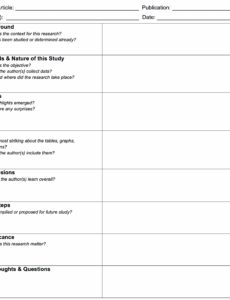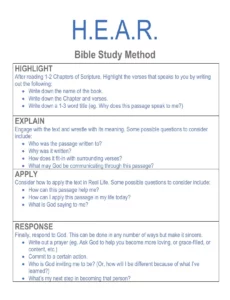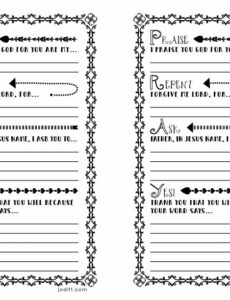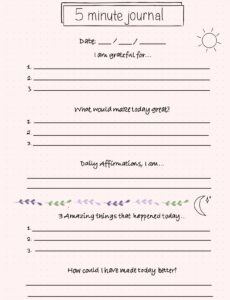Staring at a stack of practice questions, it’s easy to feel overwhelmed, especially when you’re consistently making the same types of mistakes. You’ve put in the hours, you’ve memorized the concepts, but something still isn’t quite clicking. This isn’t uncommon for anyone tackling the LSAT, a test that demands precision, critical thinking, and an almost intuitive understanding of logic. The truth is, simply doing more practice questions isn’t always the answer; it’s how you learn from those questions that truly makes a difference.
That’s where a structured approach to analyzing your errors comes into play. Instead of just noting a question as “wrong” and moving on, imagine systematically dissecting each mistake to understand its root cause. This intentional review process is one of the most powerful strategies you can employ to boost your LSAT score, transforming weaknesses into strengths. It moves beyond rote memorization, encouraging deep analytical reflection that mirrors the very skills the LSAT tests.
Why a Wrong Answer Journal is Your LSAT Secret Weapon
Many students make the mistake of focusing solely on getting through as many practice questions as possible. While exposure to diverse questions is undoubtedly important, simply completing them without a rigorous review process leaves significant learning opportunities on the table. You might be making the same error patterns across different questions without even realizing it, or worse, you might be guessing your way to the correct answer without truly understanding *why* it’s correct. A dedicated wrong answer journal forces you to slow down and confront these blind spots head-on.
This isn’t about shaming yourself for mistakes; it’s about seeing them as invaluable data points. Each incorrect answer is a specific piece of feedback from the test, highlighting an area where your understanding or application of concepts needs refinement. By documenting and analyzing these errors, you engage in active learning, which is far more effective than passive review. You’re not just re-reading explanations; you’re actively reconstructing your thought process and comparing it to the correct logical path.
Moreover, a journal helps you identify pervasive trends in your errors. Are you consistently falling for certain trap answers in Logical Reasoning? Do you struggle with a particular game type in Logic Games, or with dense science passages in Reading Comprehension? Without a consolidated record, these patterns can remain hidden, preventing you from addressing the underlying issues. The beauty of an lsat wrong answer journal template lies in its ability to bring these patterns to light, allowing you to tailor your study plan to target your specific weaknesses.

Think of it as forensic analysis for your LSAT prep. You’re gathering evidence, examining the scene of the crime (your mistake), and determining the motive (your flawed reasoning). Over time, this meticulous process builds a comprehensive profile of your strengths and weaknesses, empowering you to study smarter, not just harder.
Key Elements to Track in Your Journal
- Question Number and Section: This helps you quickly locate the original question for reference.
- Topic or Question Type: Categorize the question (e.g., Strengthen, Main Point, Parallel Reasoning, Grouping Game, Scientist’s Debate).
- Why I Chose My Answer: Detail your exact thought process, assumptions, and why you believed your answer was correct.
- Why the Correct Answer is Correct: Explain the official reasoning, connecting it to principles or rules.
- Why Other Answer Choices Are Wrong: Analyze why each incorrect option fails, especially appealing distractors.
- My Thought Process Error: Identify the specific breakdown in your logic (e.g., misread a word, failed to identify a necessary assumption, made an unwarranted inference, rushed, didn’t map rules correctly).
- Takeaway/Actionable Insight: What specific lesson did you learn? What should you do differently next time? This is the most crucial part for future improvement.
Crafting Your Personalized Wrong Answer Journal
While there are many excellent suggestions for what to include, the most effective wrong answer journal is one that truly works for *you*. This isn’t about rigidly adhering to someone else’s format; it’s about adopting an lsat wrong answer journal template that aligns with your learning style and preferences. Some students thrive with a physical notebook, meticulously handwriting their analyses, finding that the act of writing solidifies their understanding. Others prefer a digital format, using spreadsheets, Notion, or dedicated note-taking apps, which can be easily searched, filtered, and reorganized.
The key is to start somewhere, even if it feels imperfect at first. You can always refine and adapt your journal as you progress through your LSAT preparation. Maybe you discover that adding a column for “time spent on question” is helpful, or perhaps you want to color-code entries based on the severity or type of your mistake. The more you use your journal, the more insights you’ll gain into what elements are most beneficial for your review process. Don’t be afraid to experiment and personalize it over time.
Consistency is far more important than perfection. Set aside dedicated time after each practice section or full-length test to work through your incorrect answers. This isn’t a task to rush; it requires thoughtful reflection. Many students find it helpful to wait a day or two before reviewing, allowing their initial emotional response to a wrong answer to subside, enabling a more objective analysis. This “cooling off” period can lead to clearer insights into where your logic went astray.
Remember that the goal of this journal isn’t just to document your mistakes, but to learn from them. Regularly revisit your entries, especially before taking another practice test or closer to your actual exam date. Have you stopped making certain types of errors? Are new patterns emerging? Your wrong answer journal becomes a living document of your LSAT journey, chronicling your growth and highlighting the areas that still need attention. This proactive engagement with your errors is what transforms frustration into genuine progress.
The journey to LSAT mastery is rarely a straight line, but rather a process of continuous learning and adaptation. Systematically addressing your errors through a diligent review process is not just a study tactic; it’s a fundamental shift in your approach to learning. By meticulously dissecting each incorrect answer and identifying the precise breakdown in your reasoning, you gain an unparalleled understanding of the test’s nuances and your own intellectual tendencies. This detailed self-assessment fosters resilience and builds a robust foundation of critical thinking that will serve you well, not only on test day but in your future legal studies.





